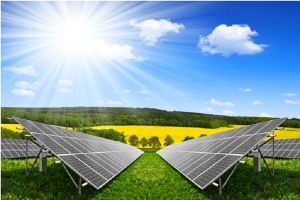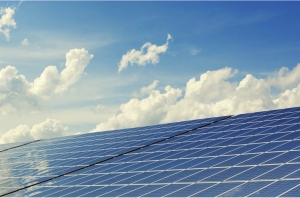The global shift towards sustainability has sparked a crucial debate in energy consumption choices: renewable vs. traditional power sources. As the world becomes more eco-conscious, understanding the nuances between these energy sources is essential for individuals and businesses who aim to make informed decisions. This comprehensive guide will help you compare the benefits and drawbacks of renewable and traditional power sources, focusing on their environmental impact, cost-effectiveness, reliability, and long-term sustainability.
1. Understanding the Basics
Before diving into the comparison, it's important to define what constitutes renewable and traditional power sources. For instance, if you live in New South Wales, then you must know what the power sources available there consist of. Then you can compare electricity in NSW objectively:
Renewable Power Sources: These include energy derived from natural processes that are replenished at a faster rate than they are consumed. Solar, wind, hydroelectric, biomass, and geothermal power are typical examples.
Traditional Power Sources: These are mainly derived from fossil fuels such as coal, oil, and natural gas. They have powered industrial growth for centuries but are limited in supply and are significant contributors to environmental pollution.
2. Environmental Impact
The environmental consequences of choosing between renewable and traditional sources are starkly different:
Emissions: Traditional power sources emit high levels of carbon dioxide and other greenhouse gases, which contribute to global warming and climate change. Renewable sources, by contrast, produce little to no emissions during operation.
Resource Consumption: Renewable energies use natural resources that can be replenished, whereas traditional fuels rely on resources that may deplete over time, leading to ecological strain.
Ecological Footprint: The extraction and burning of fossil fuels result in significant environmental degradation, including habitat destruction and water and air pollution. Renewable sources typically have a much lower ecological footprint.
3. Cost-Effectiveness
The cost of energy from renewable sources has dramatically changed over the past decade, influencing their comparison with traditional sources:
Initial Investment vs. Long-term Savings: While renewable energy systems often require higher initial investments (e.g., installing solar panels), they tend to offer lower operational costs in the long term. The price of fossil fuels can fluctuate significantly based on market conditions, potentially leading to higher costs over time.
Subsidies and Incentives: Many governments offer incentives for renewable energy installation, such as tax breaks, rebates, and grants, which can offset the initial higher costs.
Technological Advancements: The cost of renewable technology is decreasing as innovations and efficiencies improve, making renewables increasingly competitive with traditional energy prices.
4. Reliability and Energy Security
Reliability is a critical factor in the energy sector, affecting how power sources are perceived and utilised:
Consistency of Supply: Traditional energy sources have been preferred historically for their reliability; fossil fuels can be burned day or night, regardless of weather conditions. However, renewable sources like solar and wind are dependent on weather conditions, which can affect their reliability.
Energy Storage Solutions: Advances in energy storage technology are making renewable energy more reliable. Batteries and other storage technologies can store surplus energy during peak production times for use during low production periods.
Diversification and Independence: Relying on renewable sources can increase energy independence for countries, reduce their dependence on imported fuels and enhance national security.
5. Long-Term Sustainability
Considering the future of energy necessitates evaluating the sustainability of different power sources:
Sustainability of Resources: Renewable resources, by definition, are nearly inexhaustible in human terms. Traditional fossil fuels are finite and are being depleted at a rate that could lead to scarcity and high extraction costs in the foreseeable future.
Adaptation to Climate Change: Investing in renewable energy is also an investment in climate change mitigation. Reducing reliance on fossil fuels can help limit global temperature increases and stabilise weather patterns.
Regulatory Trends: Global regulatory trends are moving towards stricter emissions standards and greater support for renewable energy projects, which could influence the viability of continuing reliance on traditional power sources.
Wrapping Up
Comparing renewable and traditional power sources is more than about choosing the cheapest option. It's about strategically considering environmental impact, cost-effectiveness, reliability, and long-term sustainability.
As technology advances and the global community moves towards more sustainable practices, renewables are becoming increasingly viable as primary energy sources. Individuals and businesses can make informed choices today to contribute to a more sustainable and secure energy future.






